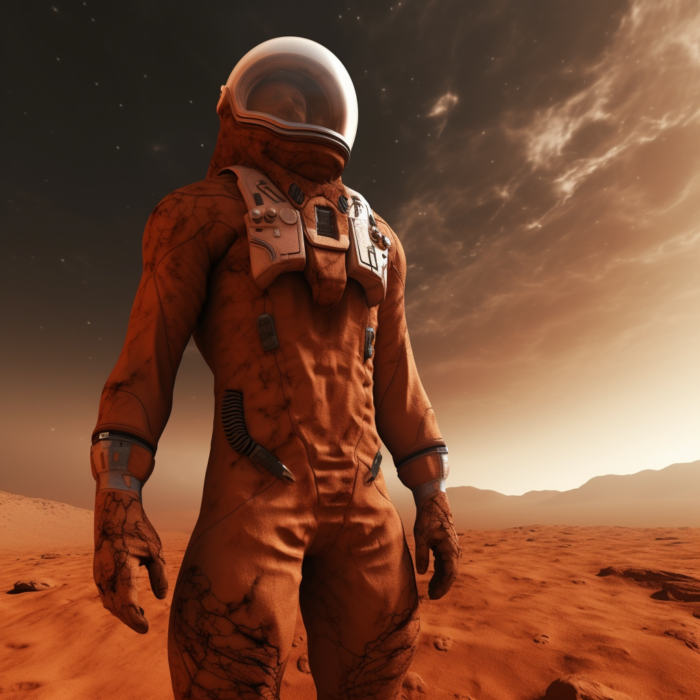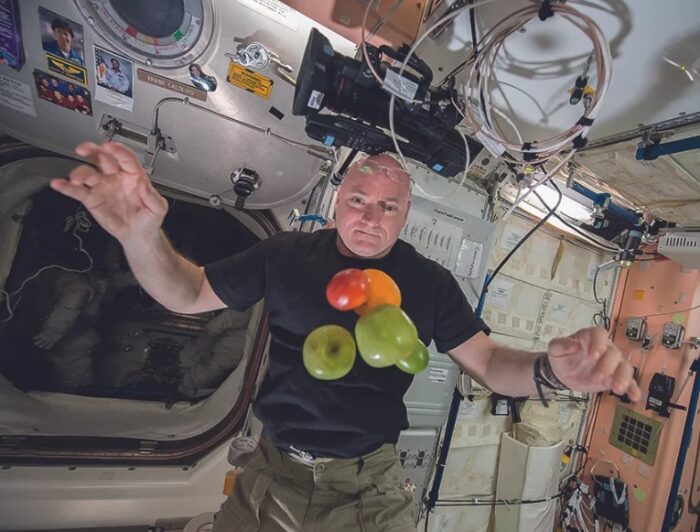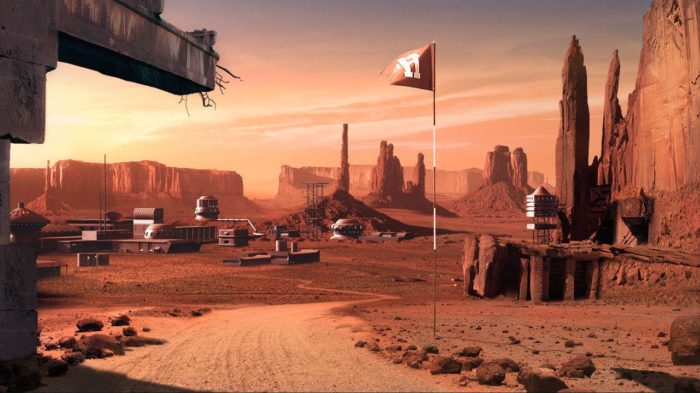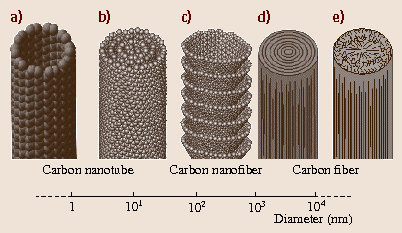Jan
30
2024
 Elon Musk has announced that his company, Neuralink, has implanted their first wireless computer chip into a human. The chip, which they plan on calling Telepathy (not sure how I feel about that) connects with 64 thin hair-like electrodes, is battery powered and can be recharged remotely. This is exciting news, but of course needs to be put into context. First, let’s get the Musk thing out of the way.
Elon Musk has announced that his company, Neuralink, has implanted their first wireless computer chip into a human. The chip, which they plan on calling Telepathy (not sure how I feel about that) connects with 64 thin hair-like electrodes, is battery powered and can be recharged remotely. This is exciting news, but of course needs to be put into context. First, let’s get the Musk thing out of the way.
Because this is Elon Musk the achievement gets more attention than it probably deserves, but also more criticism. It gets wrapped up in the Musk debate – is he a genuine innovator, or just an exploiter and showman? I think the truth is a little bit of both. Yes, the technologies he is famous for advancing (EVs, reusable rockets, digging tunnels, and now brain-machine interface) all existed before him (at least potentially) and were advancing without him. But he did more than just gobble up existing companies or people and slap his brand on it (as his harshest critics claim). Especially with Tesla and SpaceX, he invested his own fortune and provided a specific vision which pushed these companies through to successful products, and very likely advanced their respective industries considerably.
What about Neuralink and BMI (brain-machine interface) technology? I think Musk’s impact in this industry is much less than with EVs and reusable rockets. But he is increasing the profile of the industry, providing funding for research and development, and perhaps increasing the competition. In the end I think Neuralink will have a more modest, but perhaps not negligible, impact on bringing BMI applications to the world. I think it will end up being a net positive, and anything that accelerates this technology is a good thing.
Continue Reading »
Jan
29
2024
 There is an ongoing battle in our society to control the narrative, to influence the flow of information, and thereby move the needle on what people think and how they behave. This is nothing new, but the mechanisms for controlling the narrative are evolving as our communication technology evolves. The latest addition to this technology is the large language model AIs.
There is an ongoing battle in our society to control the narrative, to influence the flow of information, and thereby move the needle on what people think and how they behave. This is nothing new, but the mechanisms for controlling the narrative are evolving as our communication technology evolves. The latest addition to this technology is the large language model AIs.
“The media”, of course, has been a large focus of this competition. On the right there is constant complaints of the “liberal bias” in the media, and on the left there are complaints of the rise of right-wing media which they feel is biased and radicalizing. The culture wars focus mainly on schools, because those schools teach not only facts and knowledge but convey the values of our society. The left views DEI (diversity, equity, and inclusion) initiates as promoting social justice while the right views it as brainwashing the next generation with liberal propaganda. This is an oversimplification, but it is the basic dynamic. Even industry has been targeted by the culture wars – which narratives are specific companies supporting? Is Disney pro-gay? Which companies fly BLM or LGBTQ flags?
But increasingly “the narrative” (the overall cultural conversation) is not being controlled by the media, educational system, or marketing campaigns. It’s being controlled by social media. This is why, when the power of social media started to become apparent, many people panicked. Suddenly it seemed we had seeded control of the narrative to a few tech companies, who had apparently decided that destroying democracy was a price they were prepared to pay for maximizing their clicks. We now live in a world where YouTube algorithms can destroy lives and relationships.
Continue Reading »
Jan
26
2024
 My recent article on settling Mars has generated a lot of discussion, some of it around the basic concept of how difficult it is for humans to live anywhere but a thin envelope of air hugging the surface of the Earth. This is undoubtedly true, as I have discussed before – we evolved to be finely adapted to Earth. We are only comfortable in a fairly narrow range of temperature. We need a fairly high percentage of oxygen (Earth’s is 21%) at sufficient pressure, and our atmosphere can’t have too much of other gases that might cause us problems. We are protected from most radiation that bathes the universe. Our skin and eyes have adapted to the light of our sun, both in frequency and intensity. And we are adapted to Earth’s surface gravity, with any significantly more or less causing problems for our biology.
My recent article on settling Mars has generated a lot of discussion, some of it around the basic concept of how difficult it is for humans to live anywhere but a thin envelope of air hugging the surface of the Earth. This is undoubtedly true, as I have discussed before – we evolved to be finely adapted to Earth. We are only comfortable in a fairly narrow range of temperature. We need a fairly high percentage of oxygen (Earth’s is 21%) at sufficient pressure, and our atmosphere can’t have too much of other gases that might cause us problems. We are protected from most radiation that bathes the universe. Our skin and eyes have adapted to the light of our sun, both in frequency and intensity. And we are adapted to Earth’s surface gravity, with any significantly more or less causing problems for our biology.
Space itself is an extremely unforgiving environment requiring a total human habitat, with the main current technological challenges being artificial gravity and radiation protection. But even on other worlds it is extremely unlikely that all of the variables will be within the range of human survival, let alone comfort and thriving. Mars, for example, has too thin an atmosphere with no oxygen, no magnetic field to protect from radiation, it’s too cold and its surface gravity is too little. It’s better than the cold vacuum of space, but not by much. You still need essentially a total habitat, and we will probably have to go underground for radiation protection. Gravity is 38% that of Earths, which is probably not ideal for human biology. In space, with microgravity, at least you can theoretically use rotation to simulate gravity.
In addition to adapting off-Earth environments to humans, is it feasible to adapt humans to other environments? Let me start with some far-future options then finish with what is likely to be the nearest-future options.
Continue Reading »
Jan
25
2024
 Arguably the type of advance that has the greatest impact on technology is material science. Technology can advance by doing more with the materials we have, but new materials can change the game entirely. It is no coincidence that we mark different technological ages by the dominant material used, such as the bronze age and iron age. But how do we invent new materials?
Arguably the type of advance that has the greatest impact on technology is material science. Technology can advance by doing more with the materials we have, but new materials can change the game entirely. It is no coincidence that we mark different technological ages by the dominant material used, such as the bronze age and iron age. But how do we invent new materials?
Historically new materials were mostly discovered, not invented. Or we discovered techniques that allowed us to use new materials. Metallurgy, for example, was largely about creating a fire hot enough to smelt different metals. Sometimes we literally discovered new elements, like aluminum or tungsten, with desirable properties. We also figured out how to make alloys, combining different elements to create a new material with unique or improved properties. Adding tin to copper made a much stronger and more durable metal, bronze. While the hunt for new usable elements is basically over, there are so many possible combinations that researching new alloys is still a viable way to find new materials. In fact a recent class of materials known as “superalloys” have incredible properties, such as extreme heat resistance.
If there are no new elements (other than really big and therefore unstable artificial elements), and we already have a mature science of making alloys, what’s next? There are also chemically based materials, such as polymers, resins, and composites, that can have excellent properties, including the ability to be manufactured easily. Plastics clearly had a dramatic effect on our technology, and some of the strongest and lightest materials we have are carbon composites. But again it feels like we have already picked the low-hanging fruit here. We still need new better materials.
Continue Reading »
Jan
23
2024
 As I have written many times, including in yesterday’s post, people occupying space is hard. The environment of space, or really anywhere not on Earth, is harsh and unforgiving. One of the issues, for example, rarely addressed in science fiction or even discussions of space travel, is radiation. We don’t really have a solution to deal with radiation exposure outside the protective atmosphere and magnetic field of Earth.
As I have written many times, including in yesterday’s post, people occupying space is hard. The environment of space, or really anywhere not on Earth, is harsh and unforgiving. One of the issues, for example, rarely addressed in science fiction or even discussions of space travel, is radiation. We don’t really have a solution to deal with radiation exposure outside the protective atmosphere and magnetic field of Earth.
There are other challenges, however, that do not involve space itself but just the fact that people living off Earth will have to be in an enclosed environment. Whether this is a space station or habitat on the Moon or Mars, people will be living in a relatively small finite physical space. These spaces will be enclosed environments – no opening a window to let some fresh air in. Our best experience so far with this type of environment is the International Space Station (ISS). By all accounts, the ISS smells terrible. It is a combination of antiseptic, body odor, sweat, and basically 22 years of funk.
Perhaps even worse, the ISS is colonized with numerous pathogenic bacteria and different types of fungus. The bacteria is mainly human-associated bacteria, the kinds of critters that live on and in humans. According to NASA:
The researchers found that microbes on the ISS were mostly human-associated. The most prominent bacteria were Staphylococcus (26% of total isolates), Pantoea (23%) and Bacillus (11%). They included organisms that are considered opportunistic pathogens on Earth, such as Staphylococcus aureus (10% of total isolates identified), which is commonly found on the skin and in the nasal passage, and Enterobacter, which is associated with the human gastrointestinal tract.
This is similar to what one might find in a gym or crowded office space, but worse. This is something I often considered – when establishing a new environment off Earth, what will the microbiota look like? On the one hand, establishing a new base is an opportunity to avoid many infectious organisms. Having strict quarantine procedures can create a settlement without flu viruses, COVID, HIV or many of the germs that plague humans. I can imagine strict medical examinations and isolation prior to gaining access to such a community. But can such efforts to make an infection-free settlement succeed?
Continue Reading »
Jan
22
2024
 In the excellent sci fi show, The Expanse, which takes place a couple hundred years in the future, Mars has been settled and is an independent self-sustaining society. In fact, Mars is presented as the most scientifically and technologically advanced society of humans in the solar system. This is presented as being due to the fact that Martians have had to struggle to survive and build their world, and that lead to a culture of innovation and dynamism.
In the excellent sci fi show, The Expanse, which takes place a couple hundred years in the future, Mars has been settled and is an independent self-sustaining society. In fact, Mars is presented as the most scientifically and technologically advanced society of humans in the solar system. This is presented as being due to the fact that Martians have had to struggle to survive and build their world, and that lead to a culture of innovation and dynamism.
This is a version of the Turner thesis, which has been invoked as one justification for the extreme expense and difficulty of settling locations off Earth. I was recently pointed to this article discussing the Turner thesis in the context of space settlement, which I found interesting. The Turner thesis is that the frontier mindset of the old West created a culture of individualism, dynamism, and democracy that is a critical part of the success of America in general. This theory was popular in the late 19th and early 20th centuries, but fell out of academic favor in the second half of the 20th century. Recent papers trying to revive some version of it are less than compelling, showing that frontier exposure correlates only very softly with certain political and social features, and that those features are a mixed bag rather than an unalloyed good.
The article is generally critical of the notion that some version of the Turner thesis should be used to justify settling Mars – that humanity would benefit from a new frontier. But I basically agree with the article, that the Turner thesis is rather weak and complex, and that analogies between the American Western frontier and Mars (or other space locations) is highly problematic. In every material sense, it’s a poor analogy. On the frontier there was already air, food, soil, water, and other people living there. None of those things (as far as we know) exists on Mars.
Continue Reading »
Jan
19
2024
 Have you heard of Cope’s Rule or Foster’s Rule? American paleontologist Edward Drinker Cope first noticed a trend in the fossil record that certain animal lineages tend to get bigger over evolutionary time. Most famously this was noticed in the horse lineage, beginning with small dog-sized species and ending with the modern horse. Bristol Foster noticed a similar phenomenon specific to islands – populations that find their way to islands tend to either increase or decrease in size over time, depending on the availability of resources. This may also be called island dwarfism or gigantism (or insular dwarfism or gigantism).
Have you heard of Cope’s Rule or Foster’s Rule? American paleontologist Edward Drinker Cope first noticed a trend in the fossil record that certain animal lineages tend to get bigger over evolutionary time. Most famously this was noticed in the horse lineage, beginning with small dog-sized species and ending with the modern horse. Bristol Foster noticed a similar phenomenon specific to islands – populations that find their way to islands tend to either increase or decrease in size over time, depending on the availability of resources. This may also be called island dwarfism or gigantism (or insular dwarfism or gigantism).
When both of these things happen in the same place there can be some interesting results. On the island of Flores a human lineage, Homo floresiensis (the Hobbit species) experienced island dwarfism, while the local rats experienced island gigantism. The result were people living with rats the relative size of large dogs.
Based on these observations, two questions emerge. The first (and always important and not to be skipped) is – are these trends actually true or are the initial observations just quirks or hyperactive pattern recognition. For example, with horses, there are many horse lineages and not all of them got bigger over time. Is this just cherry-picking to notice the one lineage that survived today as modern horses? If some lineages are getting bigger and some are getting smaller, is this just random evolutionary change without necessarily any specific trend? I believe this question has been answered and the consensus is that these trends are real, although more complicated than first observed.
Continue Reading »
Jan
18
2024
 One of the dreams of a green economy where the amount of CO2 in the atmosphere is stable, and not slowly increasing, is the ability to draw CO2 from the atmosphere and convert it to a solid form. Often referred to as carbon capture, some form of this is going to be necessary eventually, and most climate projections include the notion of carbon capture coming online by 2050. Right now we don’t have a way to economically and on a massive industrial scale pull significant CO2 from the air. There is some carbon capture in the US, for example, but it accounts for only 0.4% of CO2 emissions. It is used near locations of high CO2 production, like coal-fired plants.
One of the dreams of a green economy where the amount of CO2 in the atmosphere is stable, and not slowly increasing, is the ability to draw CO2 from the atmosphere and convert it to a solid form. Often referred to as carbon capture, some form of this is going to be necessary eventually, and most climate projections include the notion of carbon capture coming online by 2050. Right now we don’t have a way to economically and on a massive industrial scale pull significant CO2 from the air. There is some carbon capture in the US, for example, but it accounts for only 0.4% of CO2 emissions. It is used near locations of high CO2 production, like coal-fired plants.
But there is a lot of research being done, mostly in the proof of concept stage. Scientists at the DOE and Brookhaven National Laboratory have published a process which seems to have promise. They can convert CO2 in the atmosphere to carbon nanofibers, which is a solid form of carbon with potential industrial uses. One potential use of these nanofibers would be as filler for concrete. This would bind up the carbon for at least 50 years, while making the concrete stronger.
In order to get from CO2 to carbon nanofibers they break the process up into two steps. They figured out a way, using an iron-cobalt catalyst, to make carbon monoxide (CO) into carbon nanofibers. This is a thermocatalyst process operating at 400 degrees C. That’s hot, but practical for industrial processes. It’s also much lower than the 1000 degrees C required for a method that would go directly from CO2 to carbon nanofibers.
Continue Reading »
Jan
16
2024
 In 1964 Isaac Asimov, asked to imagine the world 50 years in the future, wrote:
In 1964 Isaac Asimov, asked to imagine the world 50 years in the future, wrote:
“The appliances of 2014 will have no electric cords, of course, for they will be powered by long- lived batteries running on radioisotopes. The isotopes will not be expensive for they will be by- products of the fission-power plants which, by 2014, will be supplying well over half the power needs of humanity.”
Today nuclear fission provides about 10% of the world’s electricity. Asimov can be forgiven for being off by such a large amount. He, as a science fiction futurist, was thinking more about the technology itself. Technology is easier to predict than things like public acceptance, irrational fear of anything nuclear, or even economics (which even economists have a hard time predicting).
But he was completely off about the notion that nuclear batteries would be running most everyday appliances and electronics. This now seems like a quaint retro-futuristic vision, something out of the Fallout franchise. Here the obstacle to widespread adoption of nuclear batteries has been primarily technological (issues of economics and public acceptance have not even come into play yet). Might Asimov’s vision still come true, just decades later than he thought? It’s theoretically possible, but there is still a major limitation that for now appears to be a deal-killer – the power output is still extremely low.
Continue Reading »
Jan
12
2024
 University of Central Lancashire (UCLan) PhD student Alexia Lopez, who two years ago discovered a giant arc of galaxy clusters in the distant universe, has now discovered a Big Ring. This (if real) is one of the largest structures in the observable universe at 1.3 billion light years in diameter. The problem is – such a large structure should not be possible based on current cosmological theory. It violates what is known as the Cosmological Principle (CP), the notion that at the largest scales the universe is uniform with evenly distributed matter.
University of Central Lancashire (UCLan) PhD student Alexia Lopez, who two years ago discovered a giant arc of galaxy clusters in the distant universe, has now discovered a Big Ring. This (if real) is one of the largest structures in the observable universe at 1.3 billion light years in diameter. The problem is – such a large structure should not be possible based on current cosmological theory. It violates what is known as the Cosmological Principle (CP), the notion that at the largest scales the universe is uniform with evenly distributed matter.
The CP actually has two components. One is called isotropy, which means that if you look in any direction in the universe, the distribution of matter should be the same. The other component is homogeneity, which means that wherever you are in the universe, the distribution of matter should be smooth. Of course, this is only true beyond a certain scale. At small scale, like within a galaxy or even galaxy cluster, matter is not evenly distributed, and it does matter which direction you look. But at some point in scale, isotropy and heterogeneity are the rule. Another way to look at this is – there is an upper limit to the size of any structure in the universe. The Giant Arc and Big Ring are both too big. If the CP is correct, they should not exist. There are also a handful of other giant structures in the universe, so these are not the first to violate the CP.
The Big Ring is just that, a two-dimensional structure in the shape of a near-perfect ring facing Earth (likely not a coincidence but rather the reason it was discoverable from Earth). Alexia Lopez later discovered that the ring is actually a corkscrew shape. The Giant Arc is just that, the arc of a circle. Interestingly, it is in the same region of space and the same distance as the Big Ring, so the two structures exist at the same time and place. This suggests they may be part of an even bigger structure.
How certain are we that these structures are real, and not just a coincidence? Professor Don Pollacco, of the department of physics at the University of Warwick, said the probability of this being a statistical fluke is “vanishingly small”. But still, it seems premature to hang our hat on these observations just yet. I would like to see some replications and attempts at poking holes in Lopez’s conclusions. That is the normal process of science, and it takes time to play out. But so far, it seems like solid work.
Continue Reading »
 Elon Musk has announced that his company, Neuralink, has implanted their first wireless computer chip into a human. The chip, which they plan on calling Telepathy (not sure how I feel about that) connects with 64 thin hair-like electrodes, is battery powered and can be recharged remotely. This is exciting news, but of course needs to be put into context. First, let’s get the Musk thing out of the way.
Elon Musk has announced that his company, Neuralink, has implanted their first wireless computer chip into a human. The chip, which they plan on calling Telepathy (not sure how I feel about that) connects with 64 thin hair-like electrodes, is battery powered and can be recharged remotely. This is exciting news, but of course needs to be put into context. First, let’s get the Musk thing out of the way.
 There is an ongoing battle in our society to control the narrative, to influence the flow of information, and thereby move the needle on what people think and how they behave. This is nothing new, but the mechanisms for controlling the narrative are evolving as our communication technology evolves. The latest addition to this technology is the large language model AIs.
There is an ongoing battle in our society to control the narrative, to influence the flow of information, and thereby move the needle on what people think and how they behave. This is nothing new, but the mechanisms for controlling the narrative are evolving as our communication technology evolves. The latest addition to this technology is the large language model AIs. My
My  Arguably the type of advance that has the greatest impact on technology is material science. Technology can advance by doing more with the materials we have, but new materials can change the game entirely. It is no coincidence that we mark different technological ages by the dominant material used, such as the bronze age and iron age. But how do we invent new materials?
Arguably the type of advance that has the greatest impact on technology is material science. Technology can advance by doing more with the materials we have, but new materials can change the game entirely. It is no coincidence that we mark different technological ages by the dominant material used, such as the bronze age and iron age. But how do we invent new materials? As I have written many times, including in yesterday’s post, people occupying space is hard. The environment of space, or really anywhere not on Earth, is harsh and unforgiving. One of the issues, for example, rarely addressed in science fiction or even discussions of space travel, is radiation. We don’t really have a solution to deal with radiation exposure outside the protective atmosphere and magnetic field of Earth.
As I have written many times, including in yesterday’s post, people occupying space is hard. The environment of space, or really anywhere not on Earth, is harsh and unforgiving. One of the issues, for example, rarely addressed in science fiction or even discussions of space travel, is radiation. We don’t really have a solution to deal with radiation exposure outside the protective atmosphere and magnetic field of Earth. In the excellent sci fi show, The Expanse, which takes place a couple hundred years in the future, Mars has been settled and is an independent self-sustaining society. In fact, Mars is presented as the most scientifically and technologically advanced society of humans in the solar system. This is presented as being due to the fact that Martians have had to struggle to survive and build their world, and that lead to a culture of innovation and dynamism.
In the excellent sci fi show, The Expanse, which takes place a couple hundred years in the future, Mars has been settled and is an independent self-sustaining society. In fact, Mars is presented as the most scientifically and technologically advanced society of humans in the solar system. This is presented as being due to the fact that Martians have had to struggle to survive and build their world, and that lead to a culture of innovation and dynamism. Have you heard of Cope’s Rule or Foster’s Rule?
Have you heard of Cope’s Rule or Foster’s Rule?  One of the dreams of a green economy where the amount of CO2 in the atmosphere is stable, and not slowly increasing, is the ability to draw CO2 from the atmosphere and convert it to a solid form. Often referred to as carbon capture, some form of this is going to be necessary eventually, and most climate projections include the notion of carbon capture coming online by 2050. Right now we don’t have a way to economically and on a massive industrial scale pull significant CO2 from the air. There is some carbon capture in the US, for example, but it accounts for
One of the dreams of a green economy where the amount of CO2 in the atmosphere is stable, and not slowly increasing, is the ability to draw CO2 from the atmosphere and convert it to a solid form. Often referred to as carbon capture, some form of this is going to be necessary eventually, and most climate projections include the notion of carbon capture coming online by 2050. Right now we don’t have a way to economically and on a massive industrial scale pull significant CO2 from the air. There is some carbon capture in the US, for example, but it accounts for  In 1964 Isaac Asimov, asked to
In 1964 Isaac Asimov, asked to  University of Central Lancashire (UCLan) PhD student Alexia Lopez, who two years ago discovered a giant arc of galaxy clusters in the distant universe,
University of Central Lancashire (UCLan) PhD student Alexia Lopez, who two years ago discovered a giant arc of galaxy clusters in the distant universe,




